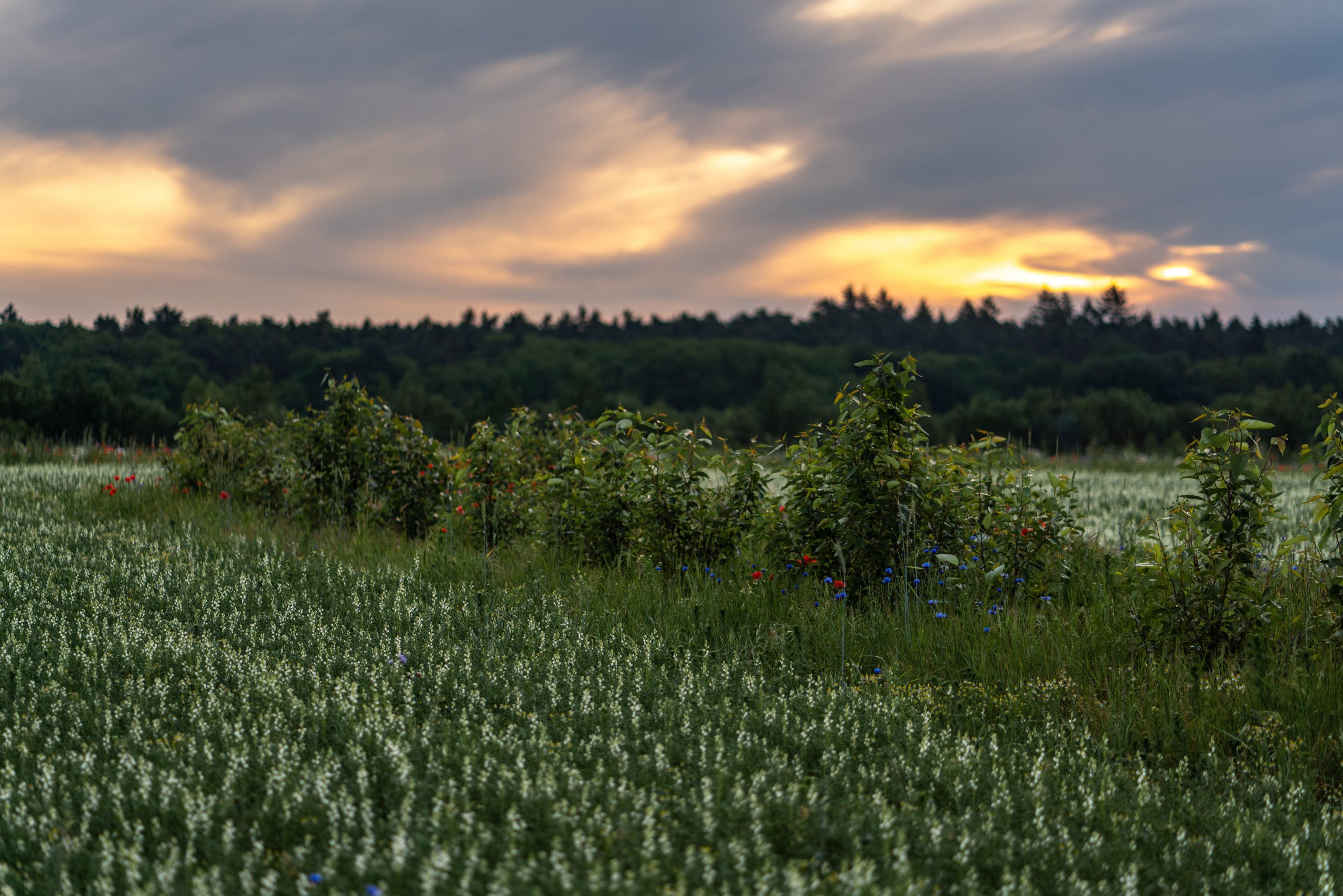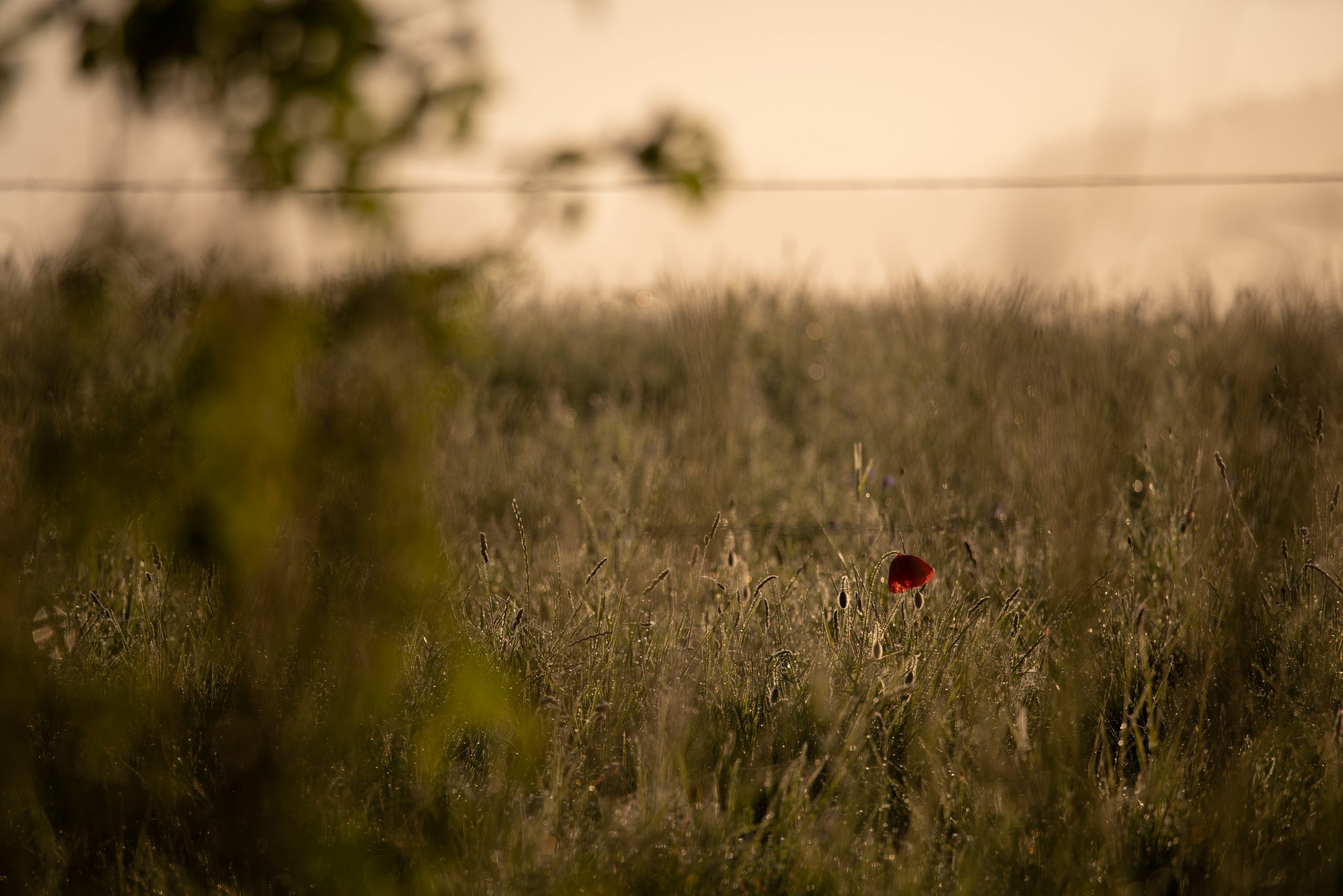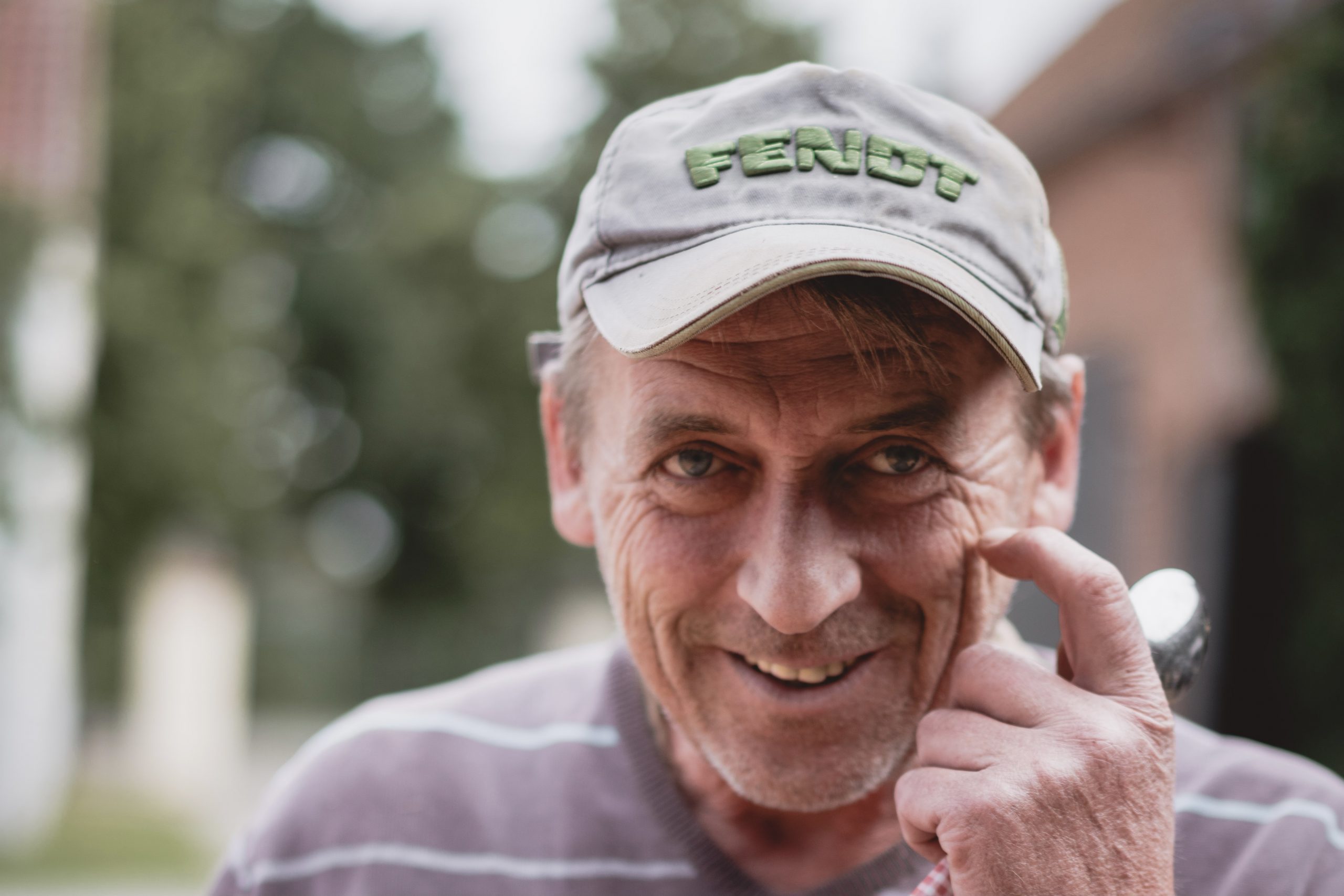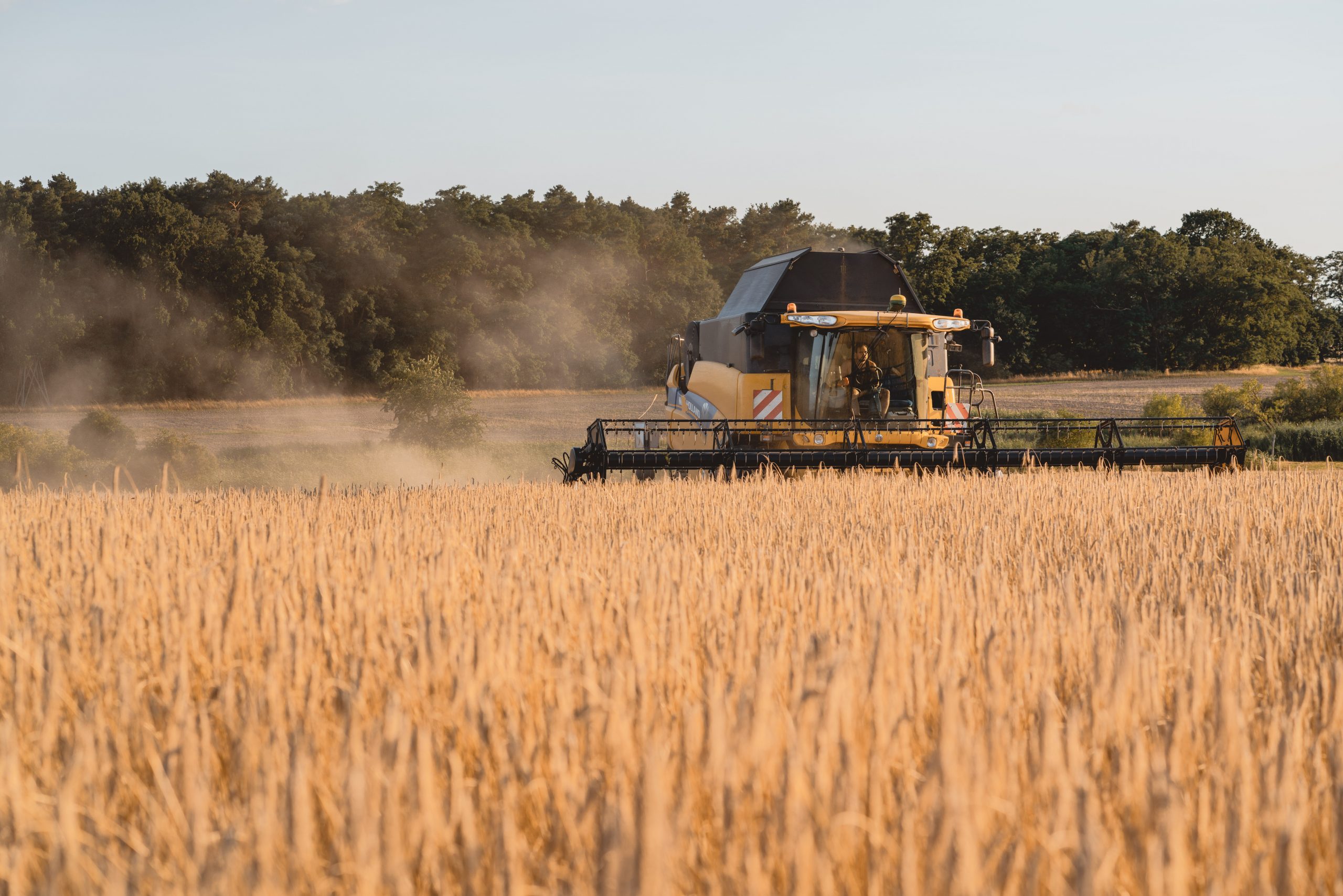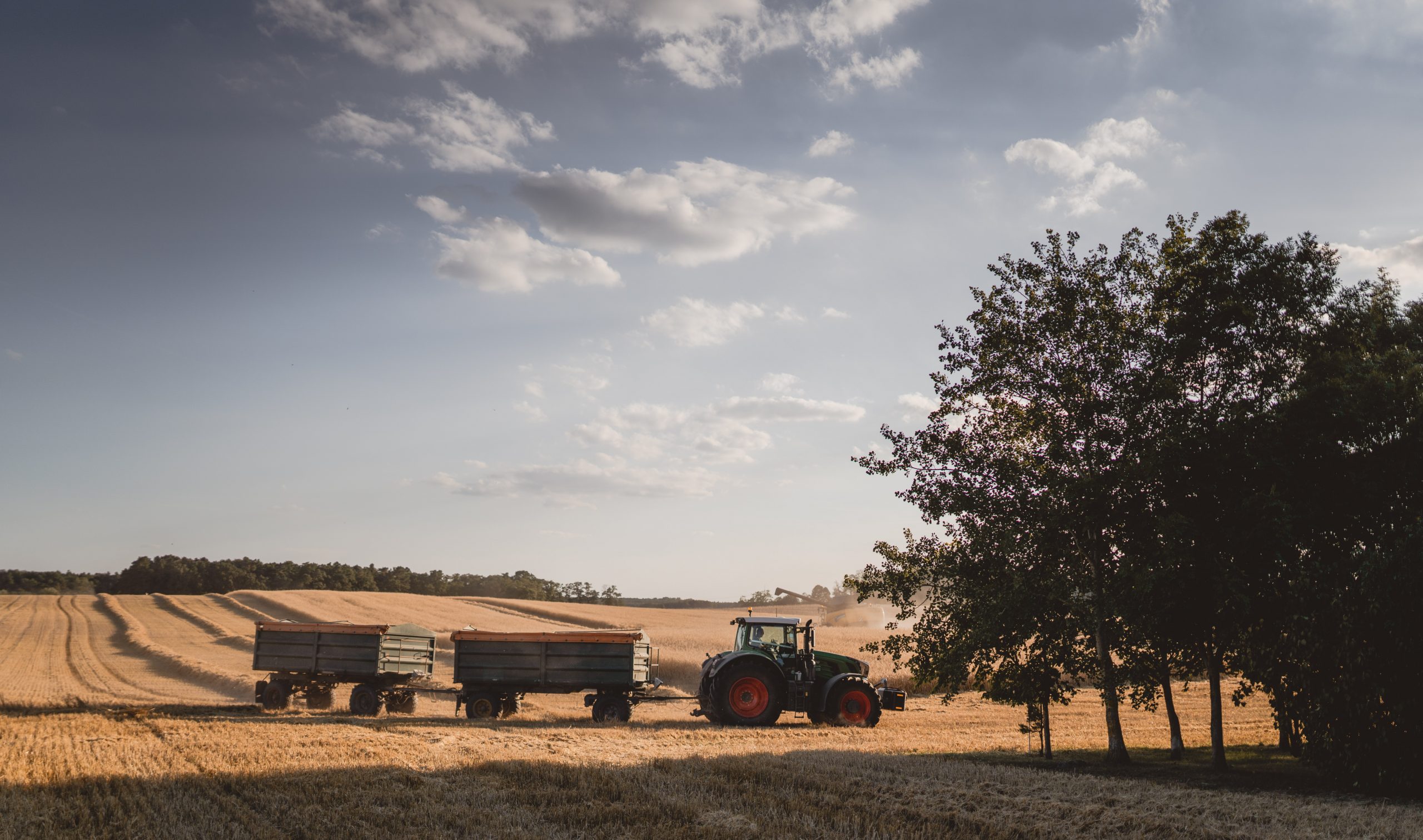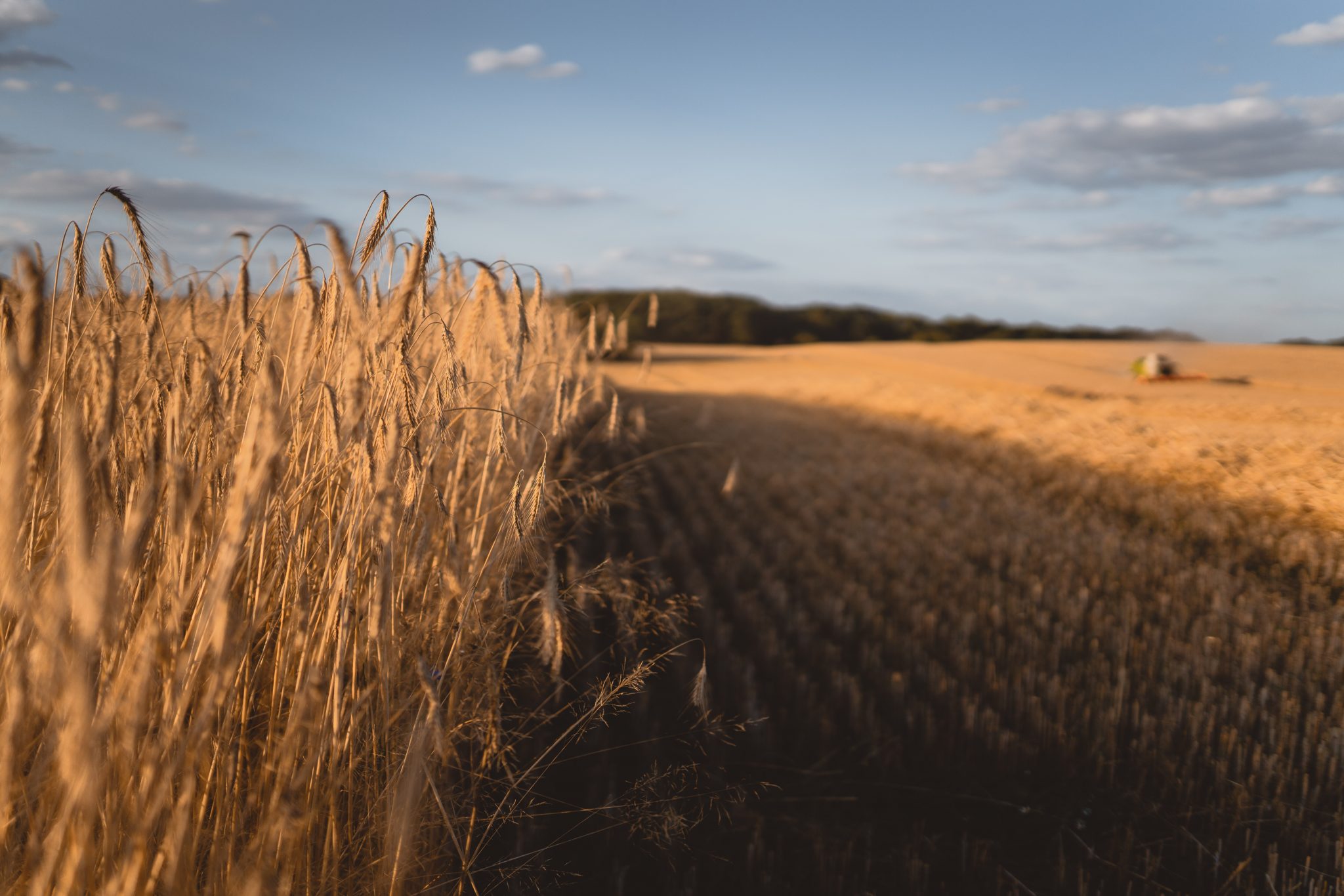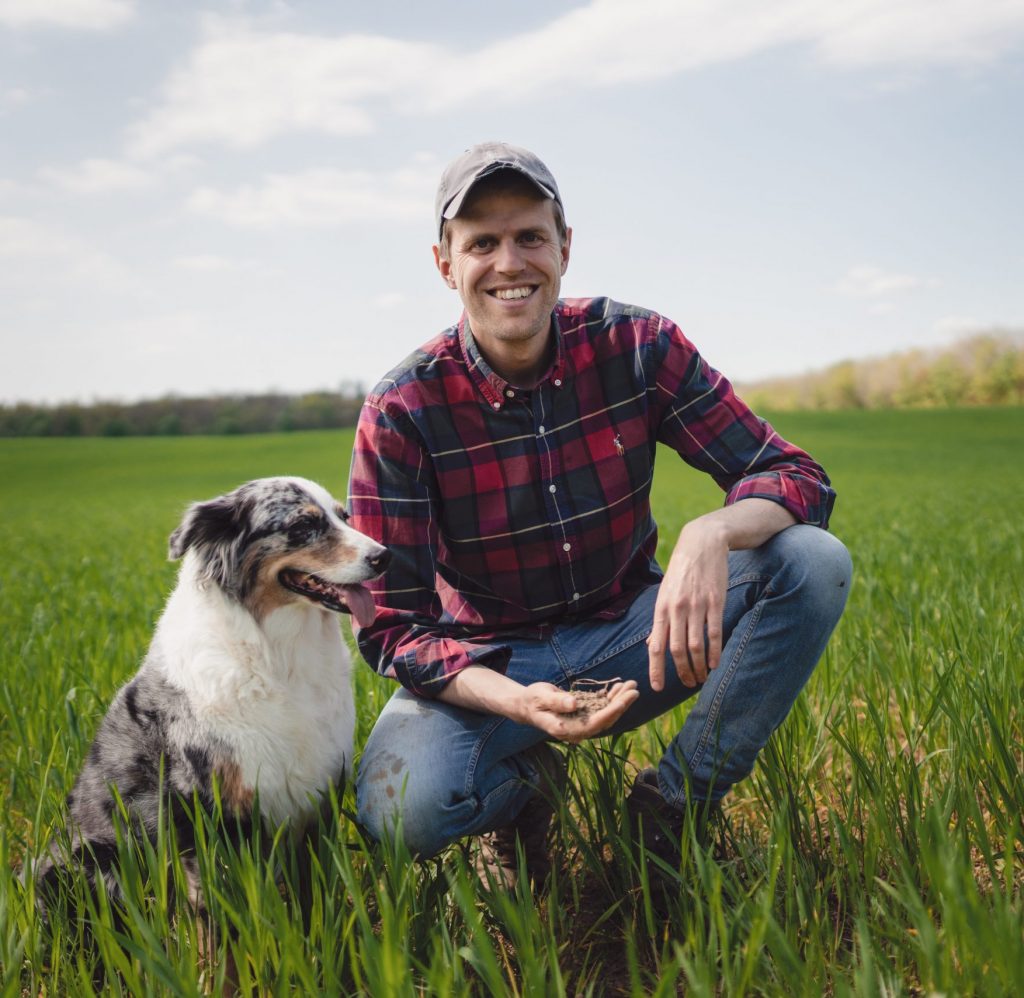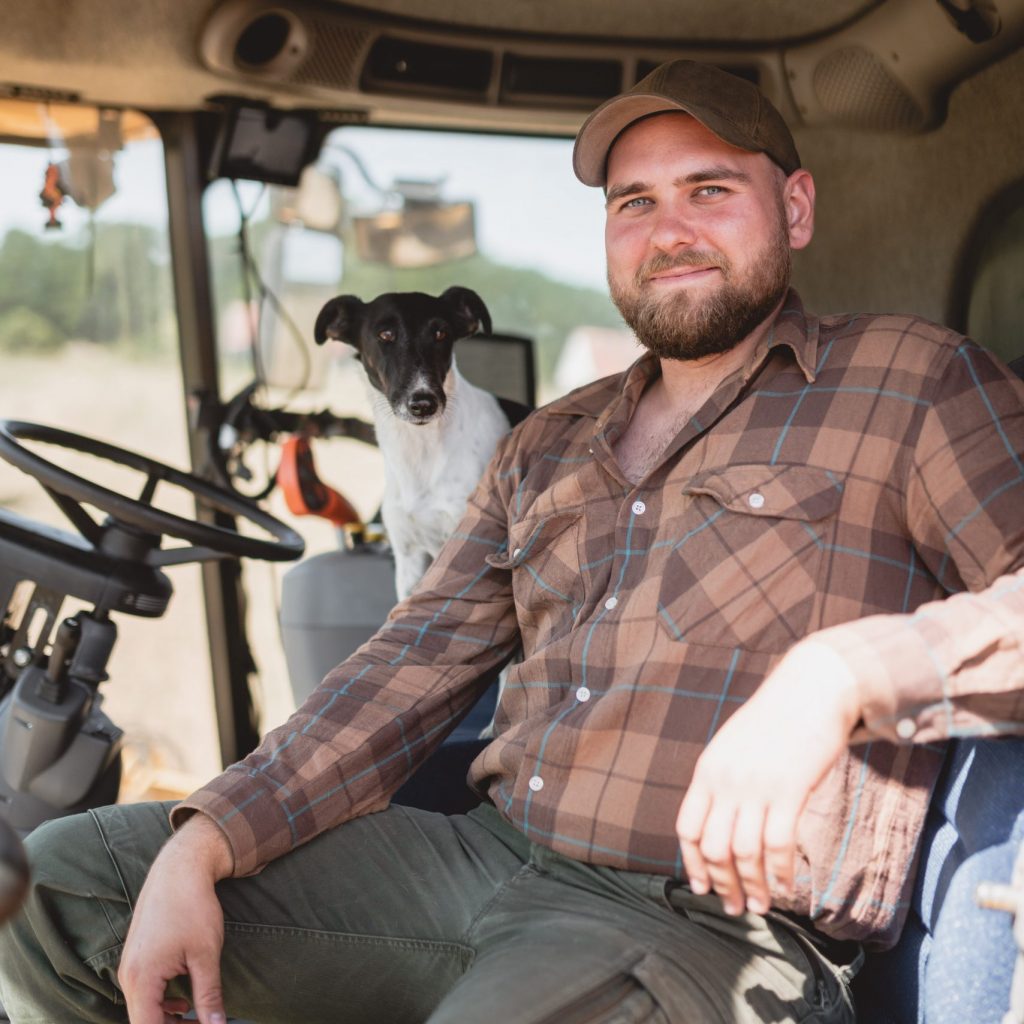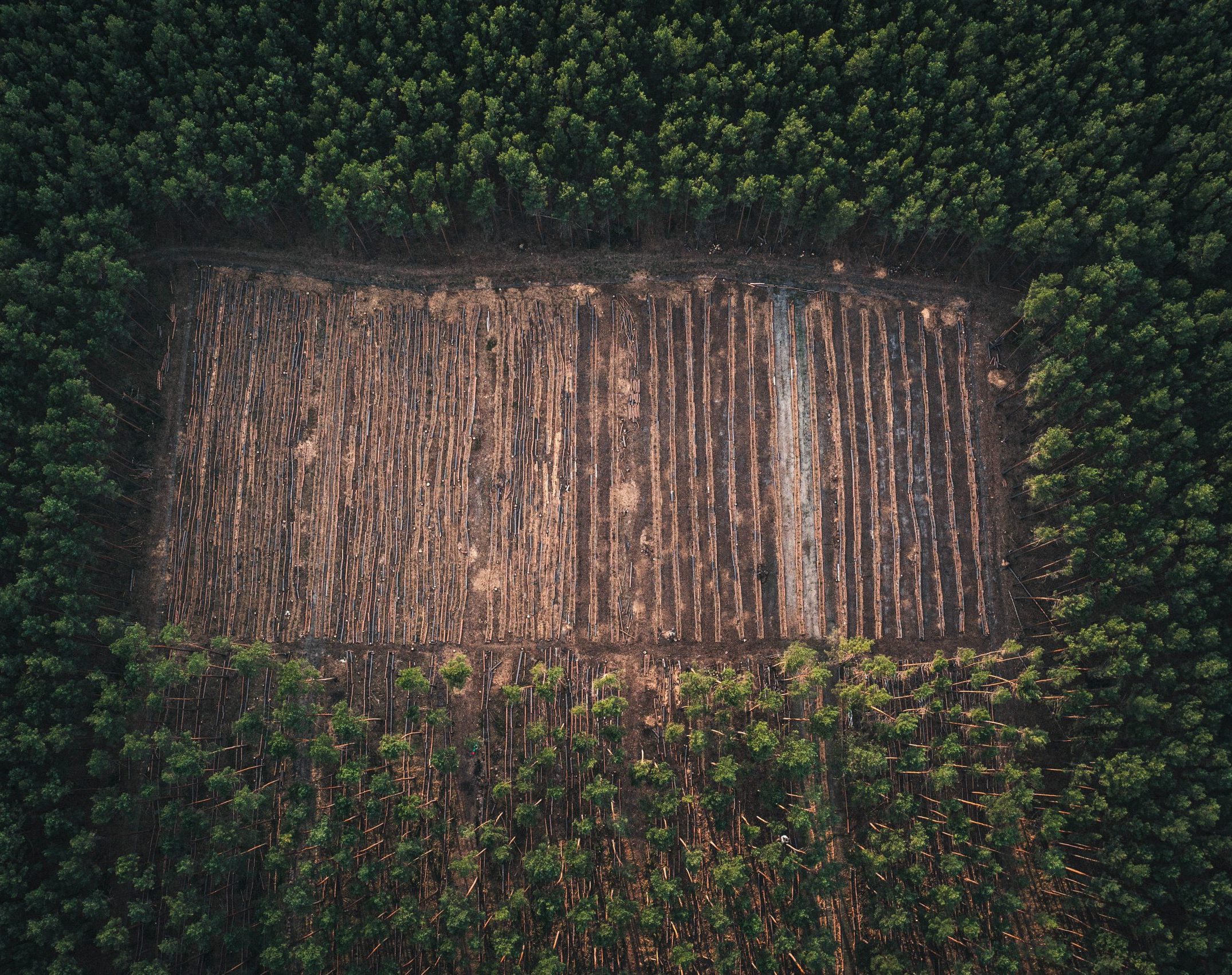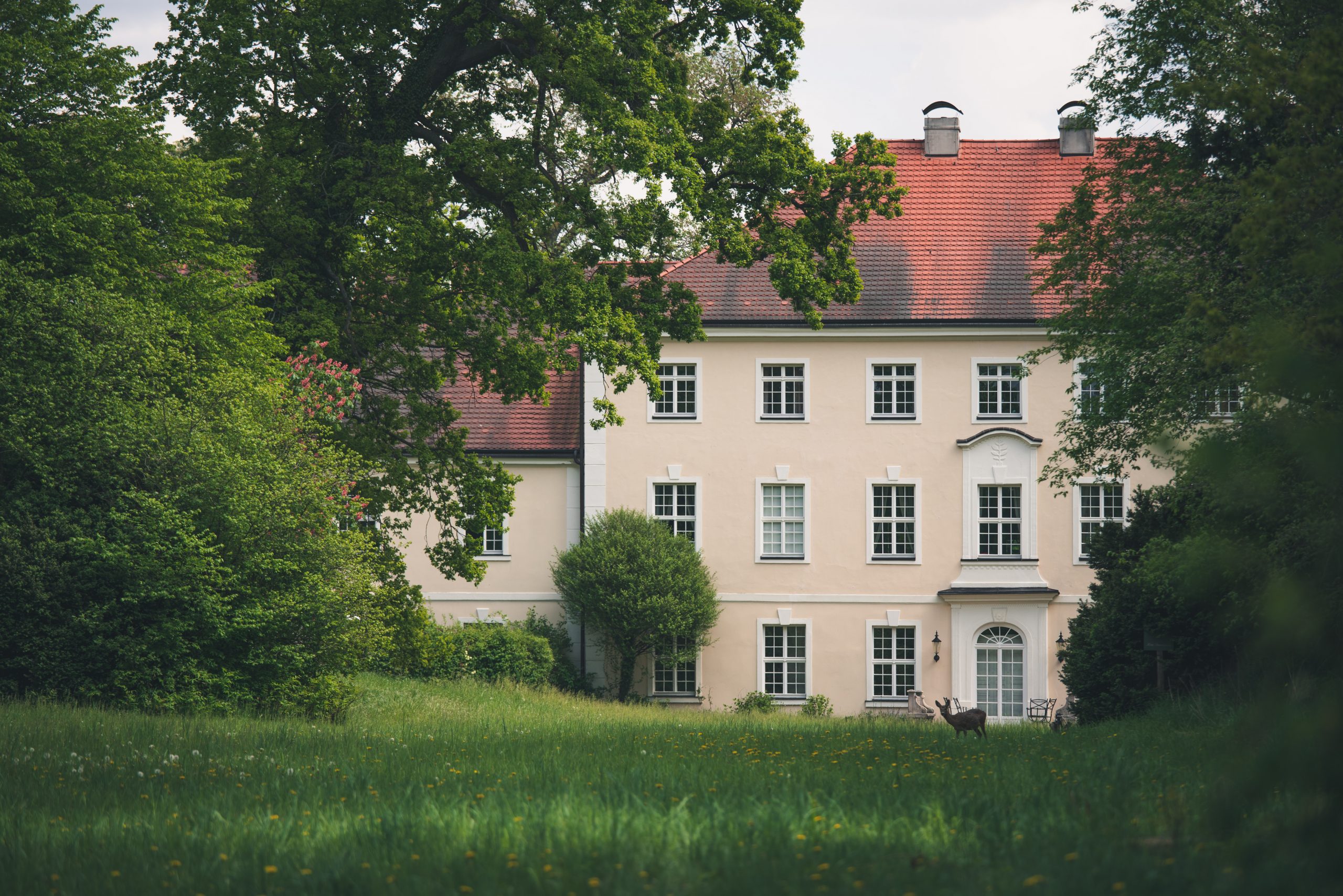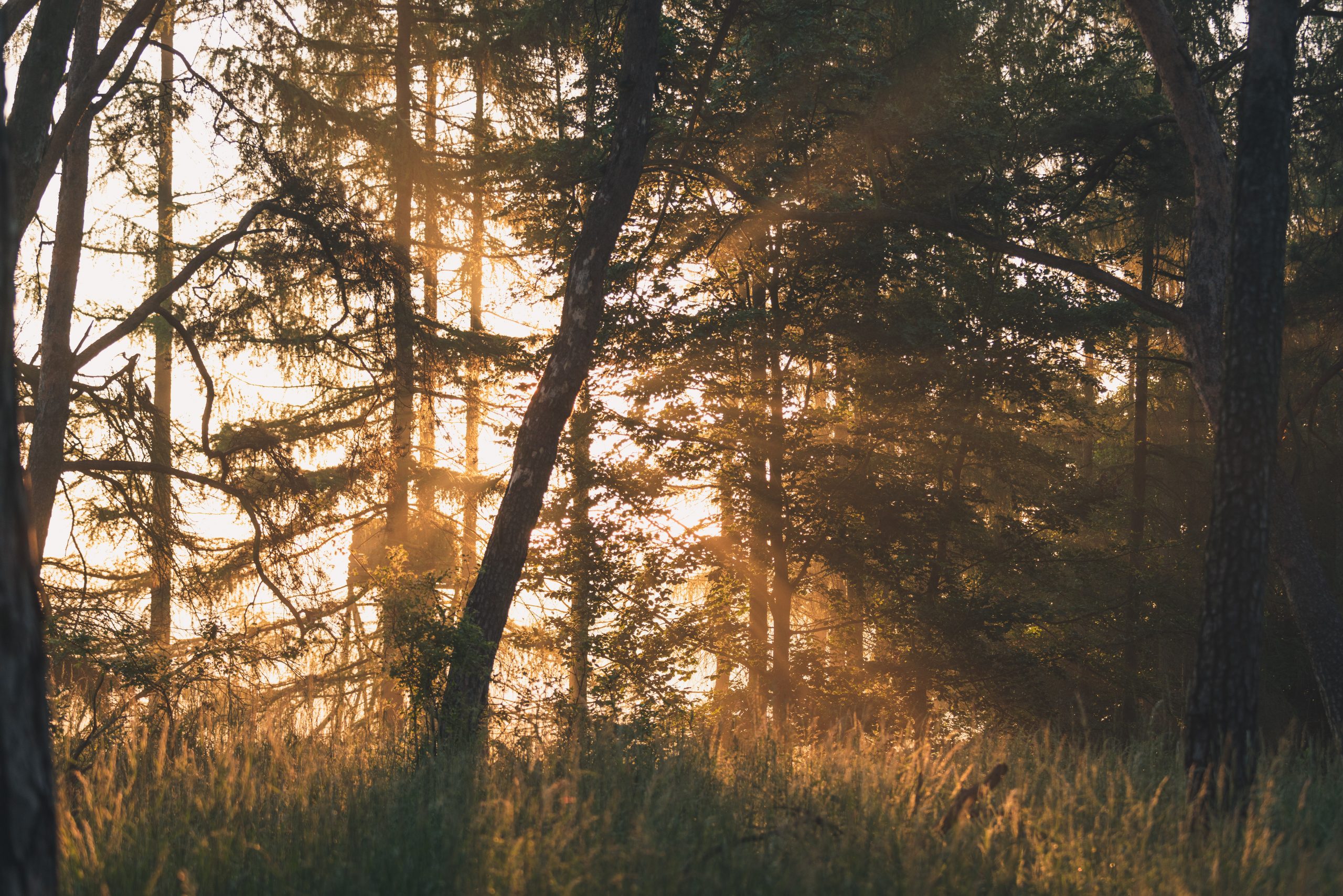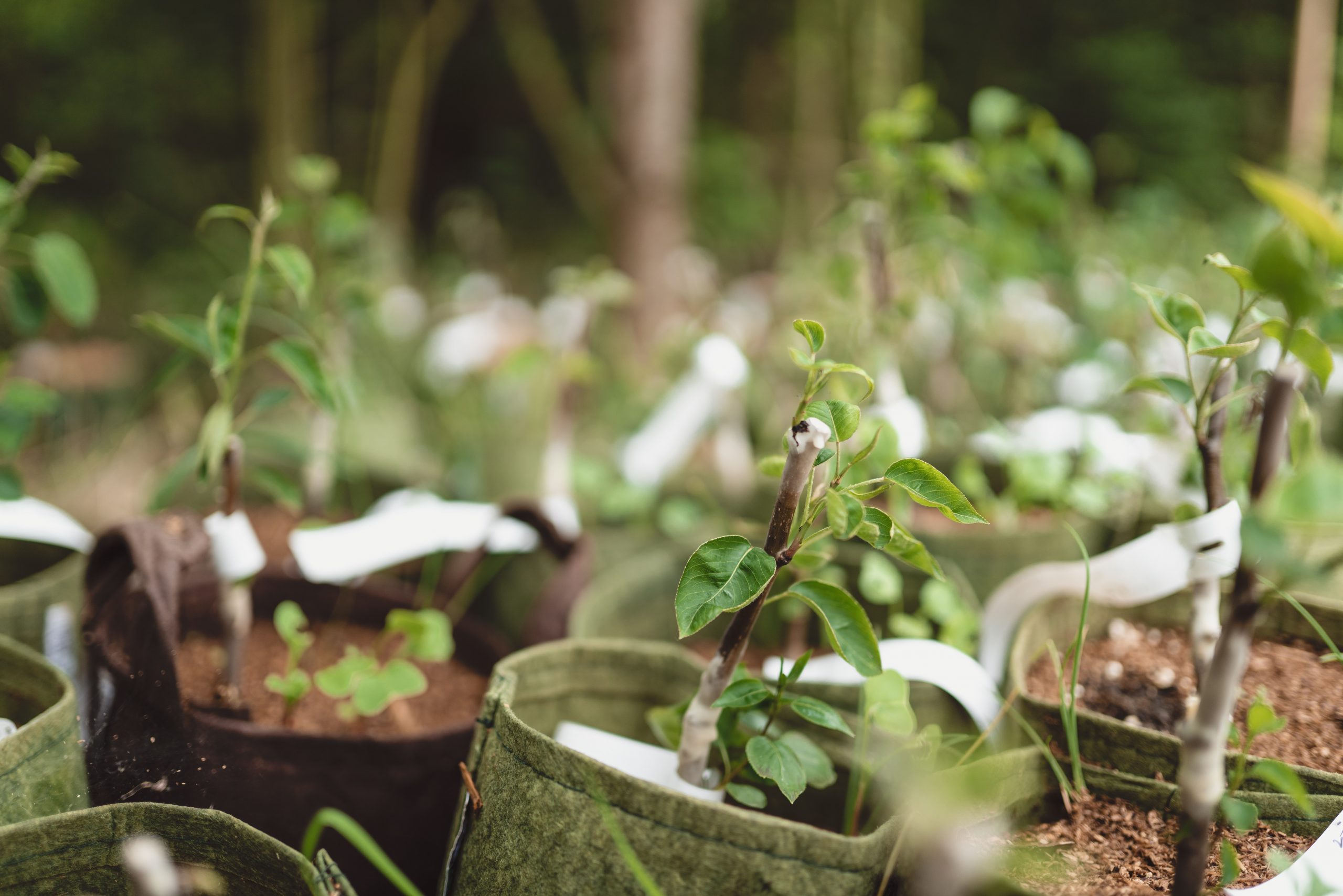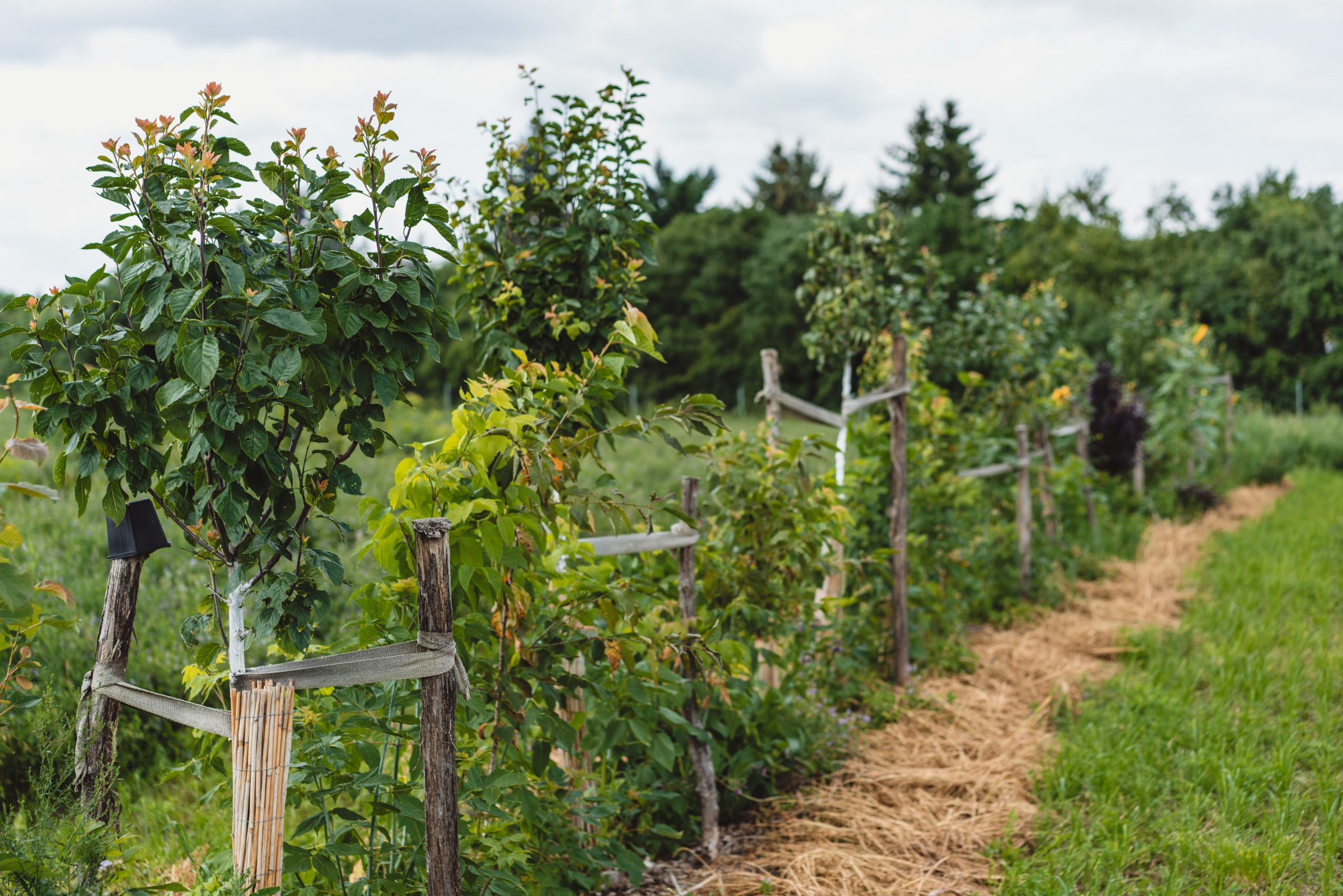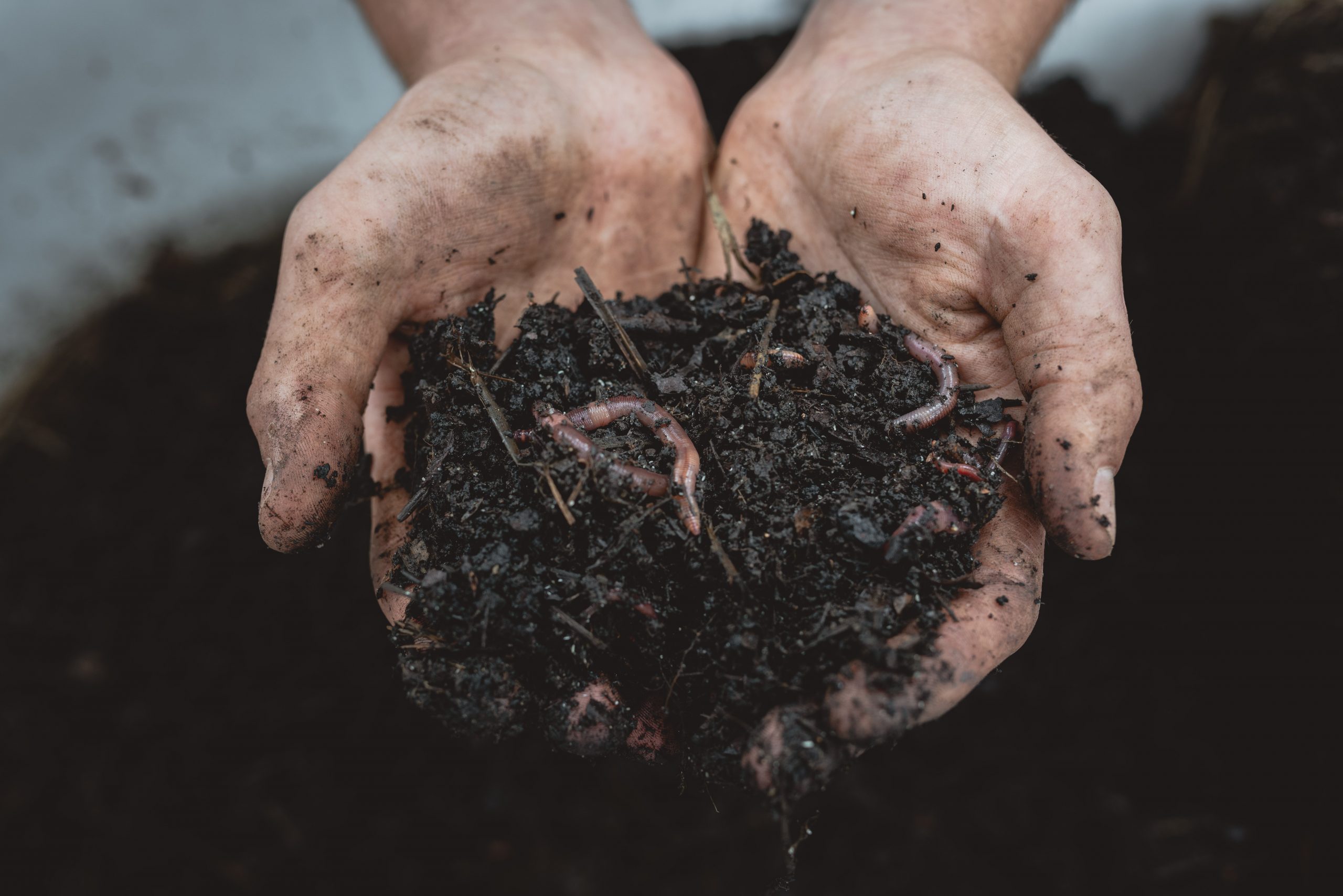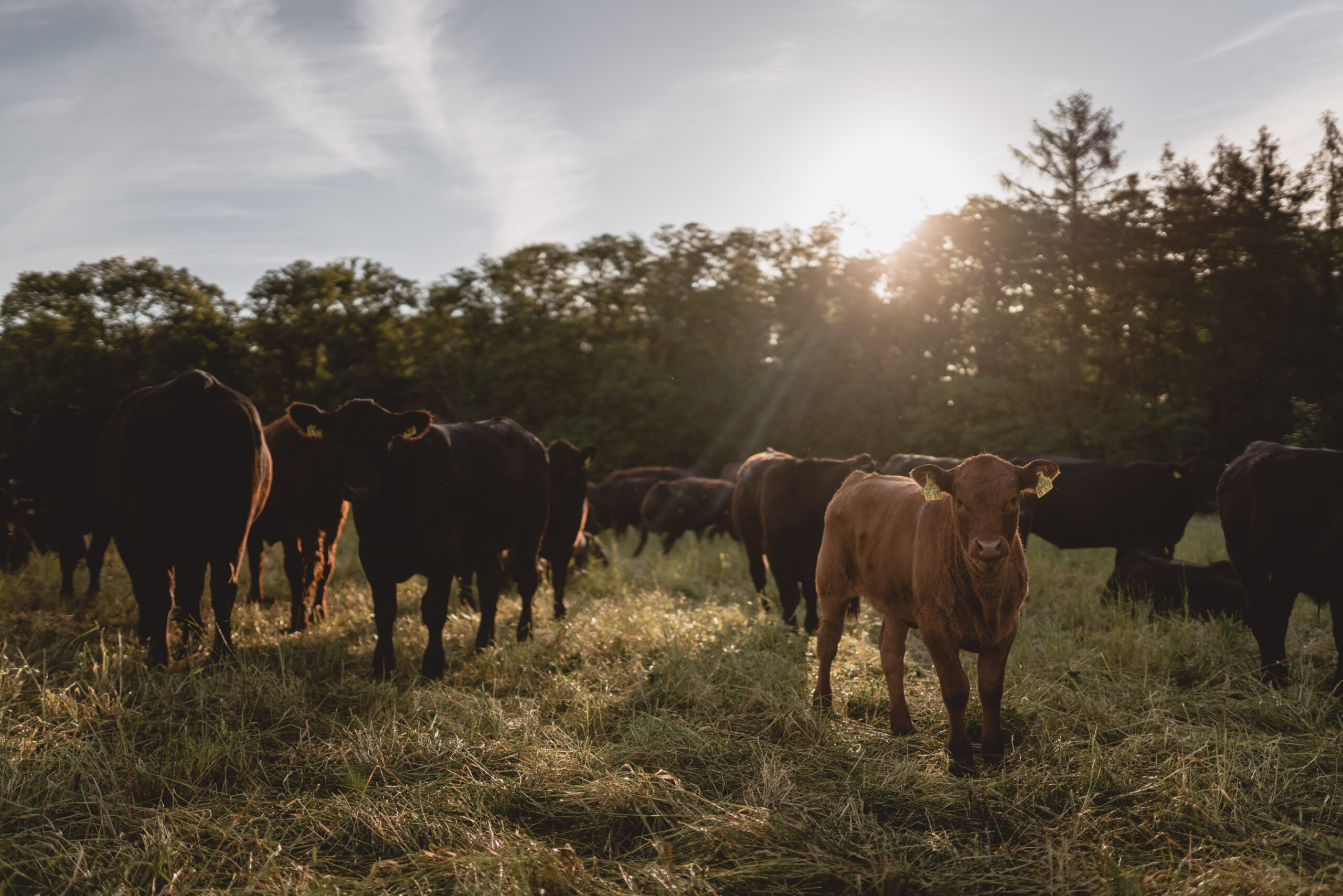How we farm
The story of our farm’s journey also began with arable farming. When Benedikt stood in front of one of the vast grain fields in 2018, after two summers of drought and looked at the golden acres in the midday heat. The soft rustling of the wheat in the wind, the sandy soil that slowly flew away and he realized: nothing here was working. Technology alone would not be the answer to revive nature here, no drone can bring life back into to the soil.
Since then, our guiding question has been: how can we transform this large-scale agriculture while creating resilient ecosystems?
The answer lies in the soil. Every day and with each season, we try to think our models of land use further, to expand multi-functionality. One of our answers is using diverse agroforestry systems.
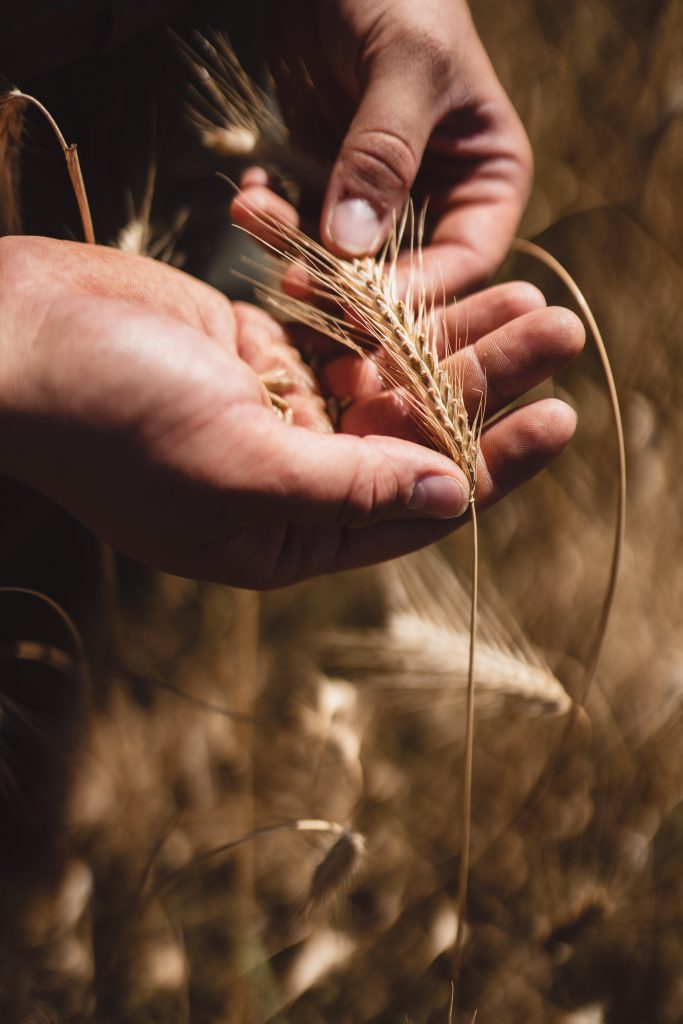
"We want to understand how to build healthy and resilient ecosystems while transforming large-scale agriculture. "
"We want to work with nature, not against it."
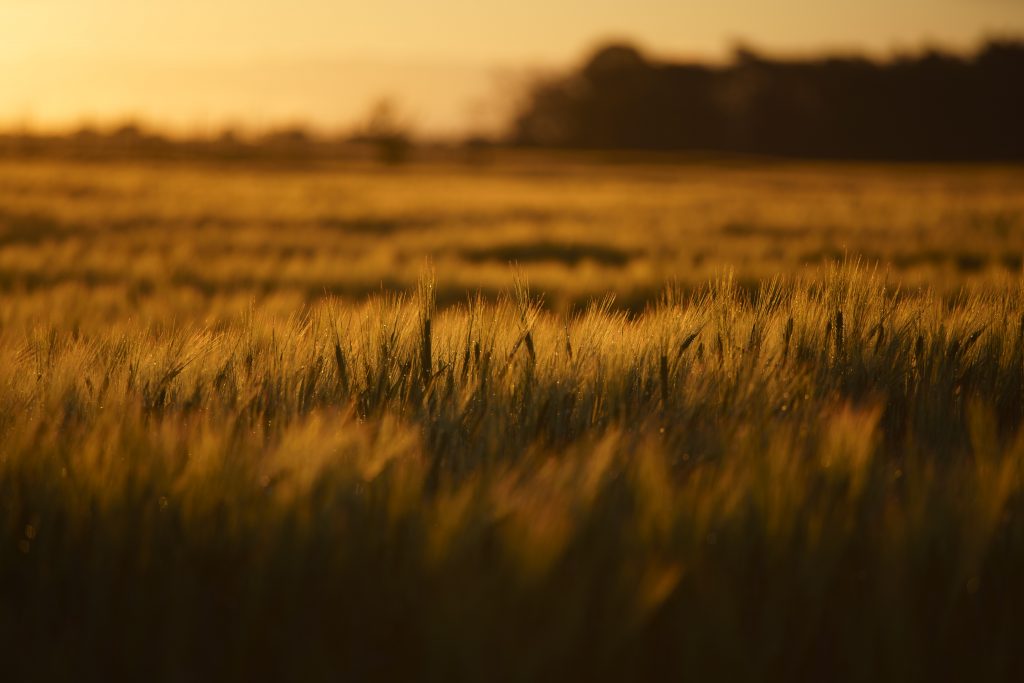
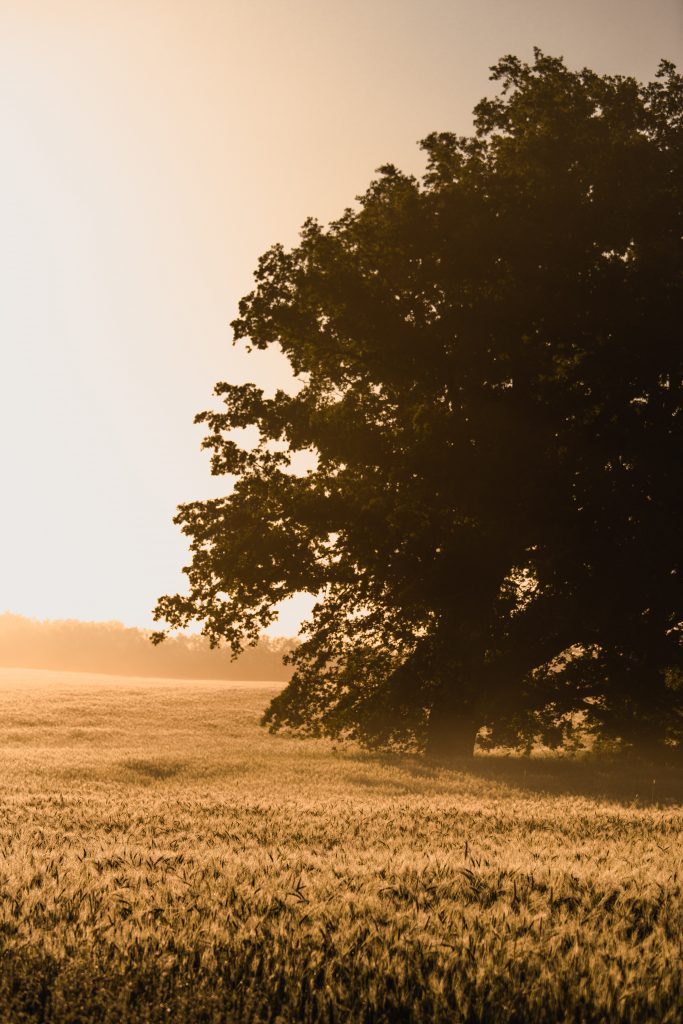
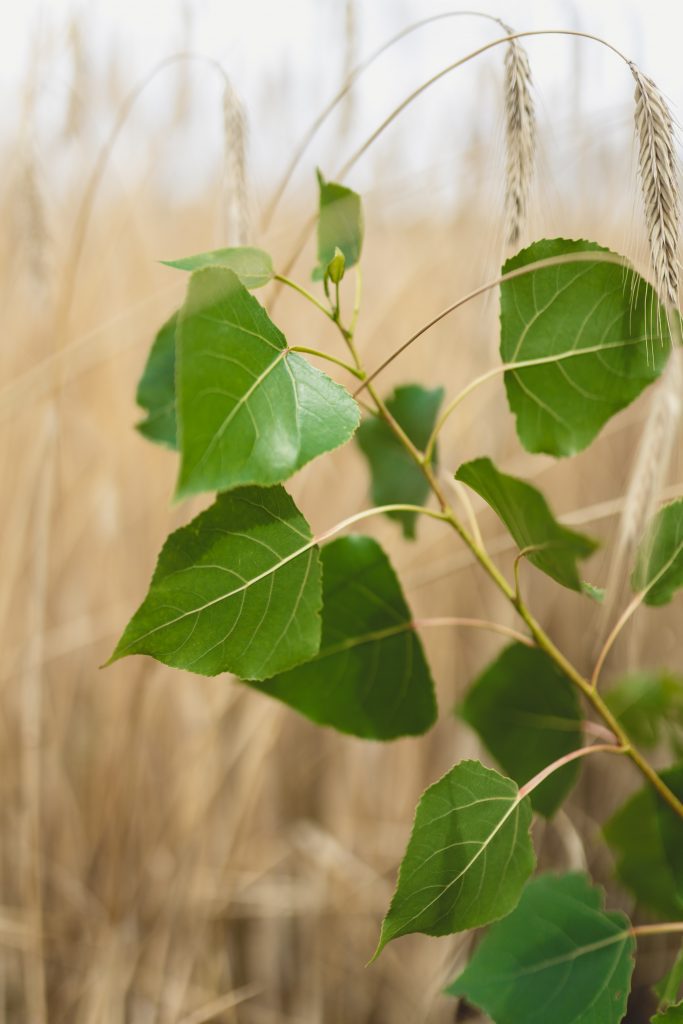
About no-till and flower strips
We grow our various crops in a six- to seven-crop rotation – spelt, wheat, triticale, rye, spring and winter barley, oats, sunflowers, lupines, alfalfa and corn.
Our goal: year-round ground cover and the most vibrant, healthy soil possible. Legumes such as alfalfa, clover and lupin are of great importance for this, as they enrich the quality of the soil by binding atmospheric nitrogen. They are grown permanently on around one-third of the farm’s land to rest the soil.
Instead of using artificial and industrially produced fertilizers, we make our own compost, dress our seeds with compost extract and graze our cows over our farmland: in summer on perennial arable forages and in winter on undersown crops and catch crops.
